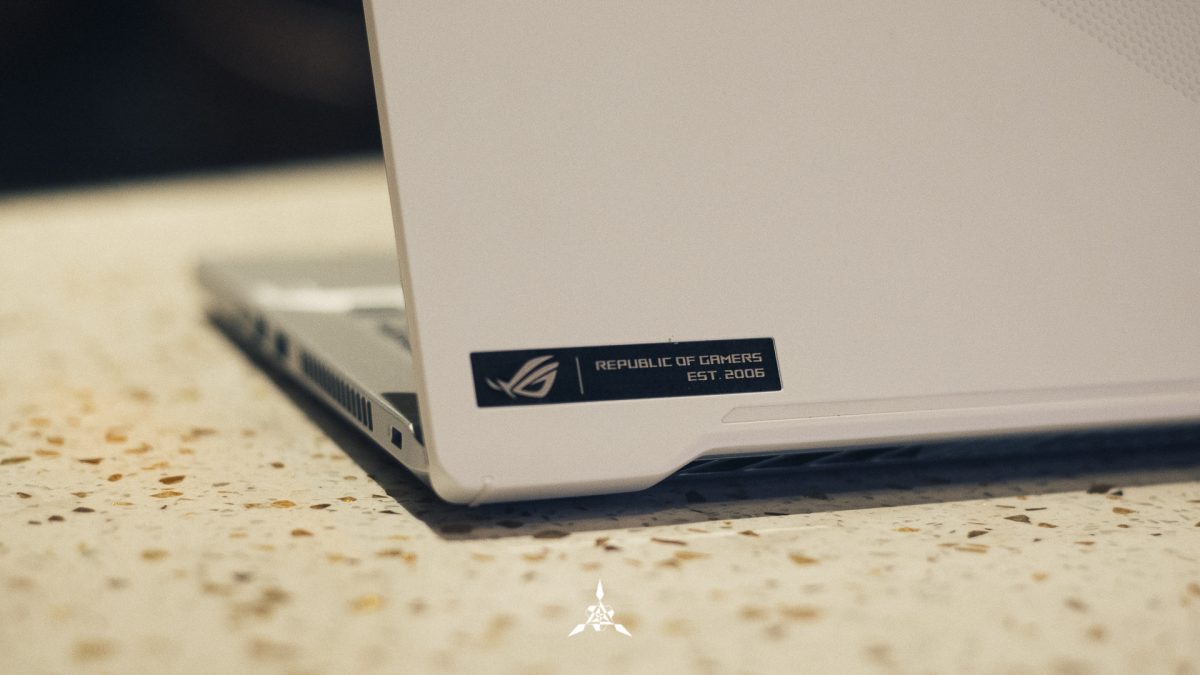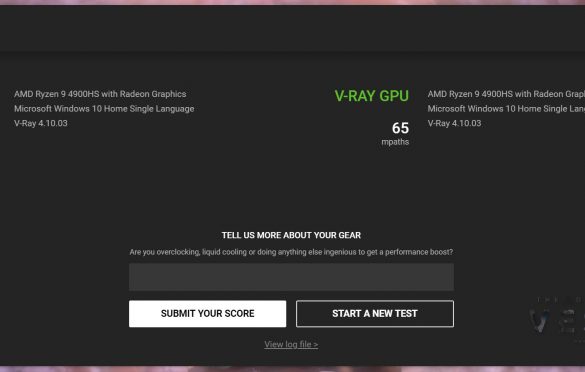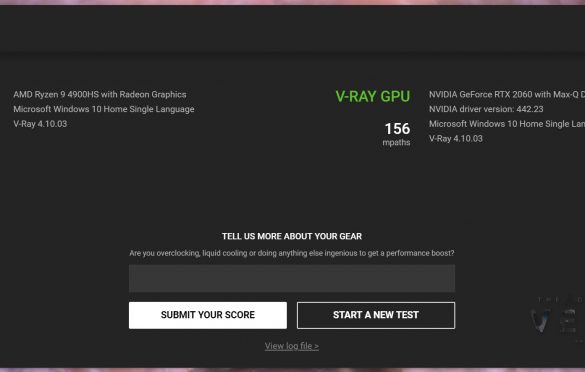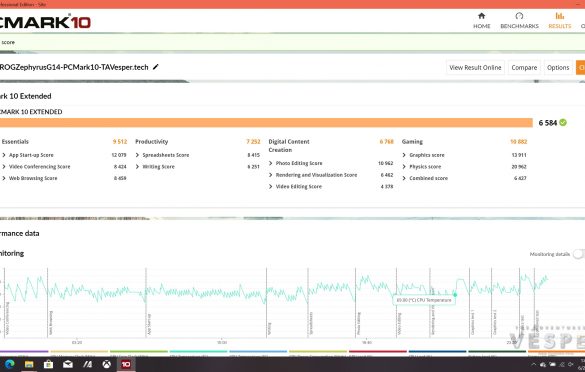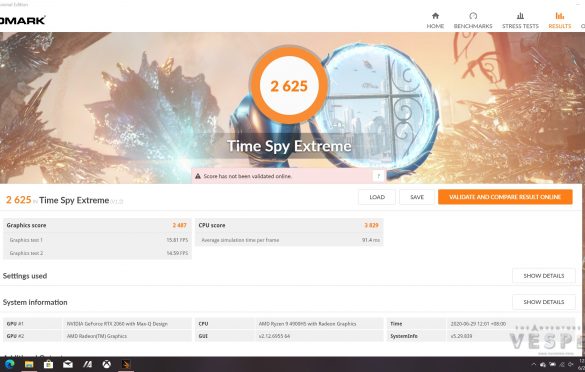8.6 Score
Pros
- The form factor is ridiculously small and still packs a punch
- Still has room for upgradability for SSD and RAM
- Ryzen 9 with RTX2060 is a dream come true in such a machine
- Can be charged with a traditional DC IN or via USB-C PD
- Battery life is surprisingly impressive
Cons
- The thermals run hot on the laptop
ASUS Zephyrus lineup has been their state-of-the-art line up of laptop and initially when it was announceD, the laptop had a chassis so thin and still carried a powerful specification that almost no other laptop has came close to. It’s one of the lineup I do see myself owning one day and it seems like the time is now because ASUS Malaysia graced us with the Zephyrus G14 which takes the form factor of the Thin-and-light and puts in a specification far too powerful for its size – and after using it for a while – here’s our final verdict on the ASUS ROG Zephyrus G14.
Look and Feel
The Zephyrus G14 looks different from the whole lineup. In fact, it gets a refreshed look for 2020. I dig this new design – on the back, you will notice that the laptop still has that similar design but instead of a brushed finish with a slash, one half of it is now a dotted panel (which I will get to it in a bit) and the other side is this plain matte finish and has a nice metal piece stuck to the laptop on the bottom corner which shows of the brand and the year ROG came to life. That out of the way, we received this laptop in White and it is one gorgeous looking laptop in my opinion. If you aren’t a fan of White color, they have a black one too – so you can go for which suits your preference. As for the rest, you will see, the laptop carries the ErgoLift Hinge for that nice incline as you use the laptop for thermal clearance and a slight incline for a slightly better typing experience.
Now the laptop, is constructed in both polycarbonate and has some reinforcing going on under the hood – which the brand claims that the laptop has Honeycomb mesh like design to give a better structural rigidity. I don’t know about that, but the whole area around the keyboard feels rigid and even when you lift the laptop, it feels like its well put together – you know that feeling everything is packed and you know its just right? – that’s the kind of feel you’d get. No one is going to get disappointed by the build quality of this laptop and its going to make a lot of consumers happy – I am happy that they have a thick bezel at the bottom to push the display a little up to but – seriously, ASUS – bring the Webcam back.

Okay remember I told you the laptop has a dotted back – this is a cool party trick and customizability that goes far beyond than making the brand logo RGB. It’s called the AniMe Matrix – a cheesy name, but it has a Matrix display where you can take complete advantage of through the Armoury Crate and customize whichever you want – we did a separate article on that, which you can click here to read more about it, on how it works and stuff.
Display

The Zephyrus G14 variant we received comes in a 14” WQHD – yep, 2K Display IPS Panel with Pantone Color Validation and support for 100% sRGB. The display – while it may seem like its super cool – its odd to see this display on a ROG laptop like – shouldn’t it be a 120Hz or 144Hz display? Worry not, they do have that variant available but the 120Hz FHD variant for the specification we are reviewing, is only going to come in September. It’s okay, whatever you are feeling – we do too.

That out of the way, the 2K 60Hz panel has support for Adaptive Sync but since the display is limited in the Frame Rate department, for the most part of trying out games, it felt alright – that is, as long as you drive those games on FHD with 60Hz – High settings. If you try to drive the display on WQHD with 60Hz, it does struggle because not a lot of games have the capability to work well in QHD. But when we did try that with Metro and Anthem, which automatically sets the resolution – handled well at medium settings. One thing for sure, the sharpness with a 2K panel feels darn good and so does the colors.
I am not a huge fan of the Pantone Validation and the display has a warmer tone right outside the box. You can go to the settings or Armoury Crate to adjust to your liking. But for the most part, the laptop was able to handle quite the number of task with this display well. I loved that I can have a laptop on the move with a good display and that has better accuracy when I do color work on Lightroom or Premiere Pro – interesting content on this, coming out soon. The display is nice to watch some movies or shows on Netflix, thanks to the colors – again. ASUS has also added the anti-glare coat to make sure the display is usable under harsh lighting.
Specification | Performance | I/O

ASUS sent us the highest spec Zephyrus G14 for us to review and it offers the following specification:
- AMD Ryzen 9 4900HS Processor
- NVIDIA GeForce RTX 2060 Max-Q with 6GB GDDR6 VRAM
- 16 GB DDR4 RAM (1x 8GB Soldered + 1x 8GB in an Expandable slot)
- 1TB PCIe NVMe M.2 SSD
- Intel Wi-Fi 6 802.11ax Support + Bluetooth 5.0
This is the only laptop in the market for now to feature the Ryzen 9 4900HS Processor and ASUS has an exclusive tie-up with AMD to make this happen. In terms of upgradability, the laptop has one extra slot to upgrade your RAM and the other RAM is soldered to the motherboard. The SSD slot is upgradable too, but since it comes with a 1TB PCIe NVMe SSD, its more than enough for you to get through.
We ran CrystalDiskMark and the SSD was able to give a Sequential Read Speed of 1859MB/s and Write Speed of 1768MB/s which is fast enough for you to load the applications, games and even boot up the laptop. I guess, that’s quite alright. Since the Ryzen 9 is the key highlight of this laptop, we did quite the number of CPU centric benchmarks to see what the laptop has.

The Ryzen 9 blew the laptop out of the water with its amazing number of core and thread count. Starting with Cinebench R20 which hit a multi core performance of 4180 points and Single core performance of 473 points. This laptop is more than capable for multithreaded work – and if you are one of those users like myself, who spends a lot of time using Adobe Suite which is CPU intensive, this laptop can put up a good show in those department without breaking a sweat. Blender took about 4 minutes approx. to finish the whole BMW render which is impressive too. Then we have VRay Benchmark, which also shows a 5 figure score on the CPU counterpart.
Since it’s a gaming laptop, its only fair to do benchmarks like PCMARK and 3DMark to show how capable the laptop is and it doesn’t fall short in that department too. With the RTX2060 Max-Q, the laptop can handle Ray Tracing and with DLSS, the frame rate is a lot more stable than you’d think. But since it’s a 60Hz display – the performance does fall a little restrictive for gaming. But if you plan to edit on this machine, its going to be pretty impressive as the display in the color accuracy department offers quite the accuracy.

Thermal is where the laptop falls into a really tough place because since it’s a Ryzen 9 laptop – it does get hot. Now in order to cool the system, ASUS has implemented all sorts of thermal solution such as 5 heat pipes, a better cooling fan and so on. But still under heavy loads the laptop can touch temperatures as high as 104 degrees and that is a lot. Now if you know the recent video where Hardware Unboxed did it to the TUF A14 to make the thermal better – I suspect the laptop has little room for thermal clearance because when you do look at the bottom of the laptop, you’ll notice the holes or slits – whatever you want to call it – is a little improper. Sadly, mine is a review unit and I cant do much but none the less – expect the laptop to get really toasty. There were times in Blender and Cinebench R20 where it hovered around 85-90 but there were also sudden spike in the CPU temperature where it would hit more than 100. Just remember to pickup one of those laptop cooling inclines really.


In terms of ports, the laptop has the following – On one side, it has a DC IN, HDMI, USB-C and a 3.5mm Combo jack whereas on the other end it has another USB-C port and 2x USB-A respectively. No SD Card reader to be seen.
Battery Life and Charging

This is the first time I got very excited over a laptop’s charging ways. In order to charge the 76Wh Lithium-Polymer battery, the Zephyrus G14 doesn’t come with one but two power bricks – not to use at the same time silly. But to accommodate both, at home and on the move experience. The 180w Power Adapter size is smaller than last round and it uses the barrel adapter to charge. But the second adapter that it comes with is a USB-C Charger – because this laptop supports 65W Charging, thanks to the support for PD 3.0 via USB-C port. Thank god, I can now leave the bigger power brick at home and bring the USB-C 65W charger on the move. But do take note, the 65W adapter isn’t going to cut it when you do plan to play games when you charge – we tried.
The battery life on the Zephyrus G14 is – well, very impressive for a Gaming laptop. During our test which involves mostly productivity tasks – browsing the internet, writing reviews, doing slides, listening to Spotify – the laptop last about 6 hours. Even in Modern Office test, the laptop lasted close to 7 hours and I believe the Ryzen processor’s optimization is the answer here. In fact, if you do try to game on the laptop – it can last 1 hours 42 minutes. That number is quite impressive too – considering gaming laptop doesn’t last far beyond 1 hour mark. So, if you do want to edit like few pictures on Lightroom, the choice is yours.
Even if the battery does blink red, you have your 65W Charger to save the day. 😉
Input and Security | Speakers
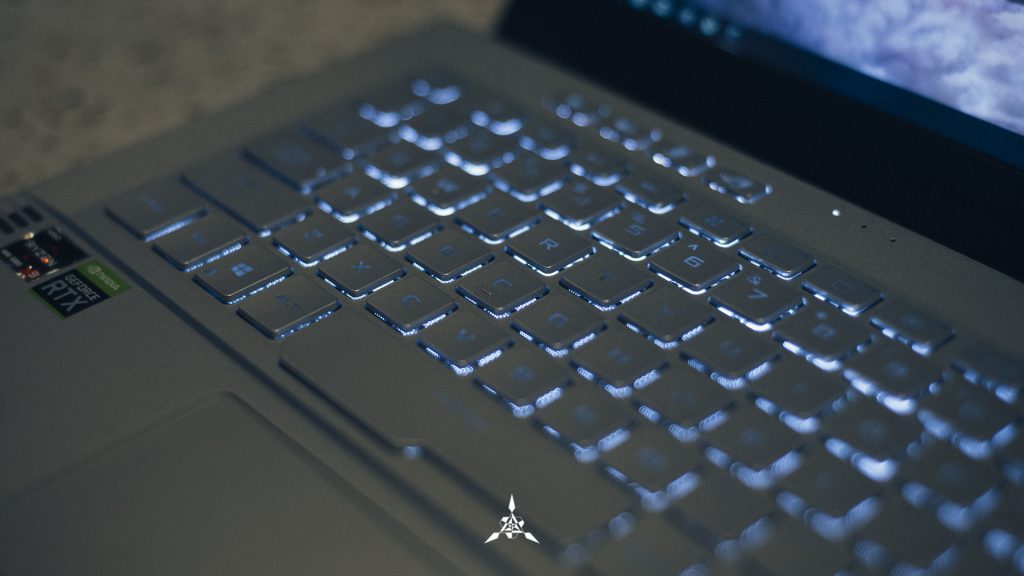
The keyboard layout on the Zephyrus G14 is as identical to the ones we saw in the ExpertBook B9 which wasn’t too long ago. It seems like ASUS decided to go for a practical layout for their keyboard with proper sized Shift keys, and arrow keys – which is still a little small for a gaming laptop but has enough space between each keys for you to not press against each other. One rather odd thing about the keyboard is how the Insert, Page controls, End, Home keys are completely gone from the keyboard. There isn’t even a single key that doubles into two function which is something we have indeed seen with the Zenbooks or even ROG laptops but ASUS ditched those. Maybe gamers simply don’t care about those keys enough.
But jokes aside, the keyboard is a chiclet style keyboard with some nice travel that has a little tactility and at the same time feels like you need a little more than normal press to type on it – but you are definitely getting a nice keyboard – doesn’t feel as mushy as it does last time. So that’s good. There isn’t RGB Backlight, so you are stuck with the White backlight – which in my opinion is a god send because I don’t see the point in having a ripple effect on my RGB – its just too distracting to type on.

The Trackpad is covered in this glass and I am a little surprised that they didn’t give it the tron-like NumberPad on the trackpad – but again, its quite alright. The trackpad is small and nice to use – thanks to the Windows Precision Drivers – and even if you want to use a proper mouse with the laptop, ASUS is super generous to include a Strix Impact Mouse along with the laptop* – which is in my opinion, a really nice touch.
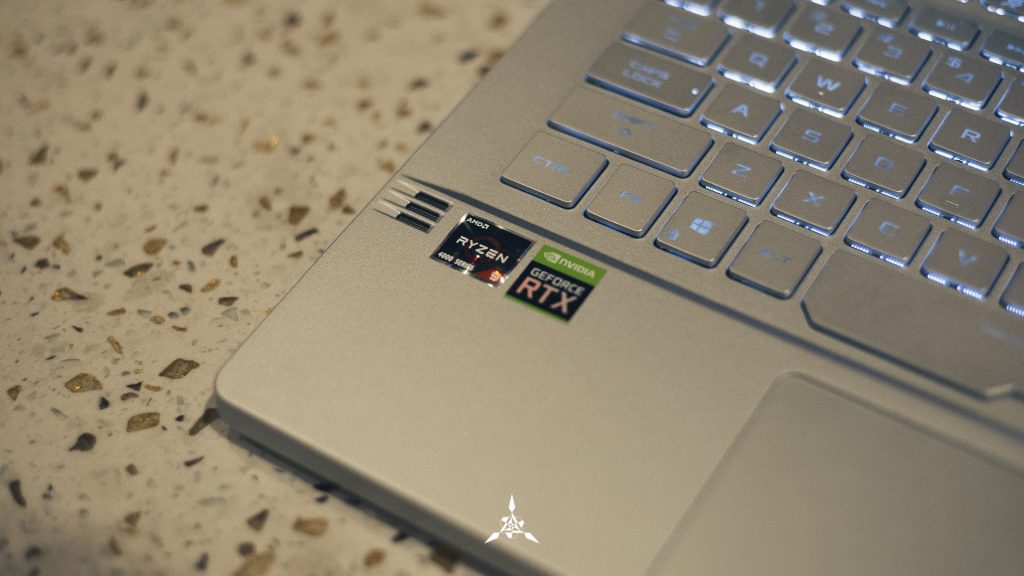
Finally we have the speakers on the ROG Zephyrus G14. ASUS is the only brand and I can strongly say this – to really take laptop speakers seriously. The laptop has a Quad Dolby Atmos Speaker setup. On the palm rests, there’s a tweeter-like positioned drivers and there are two more drivers at the bottom which gives this nice reverb and a nice staging. The speaker doesn’t struggle too much at Maximum volume and you could even enjoy some good movie on Netflix with this speaker. I tried Desert Rose by Lolo Zouai on the G14 and really enjoyed the immersive staging – and again, f*ck it sounds too damn good for a laptop.

This just might be ROG’s first gaming laptop to have a fingerprint sensor which is embedded into the power button – it works well.
Conclusion

The Zephyrus is a beefed up Zenbook with some serious firepower under the hood – at least that’s what I see with the Zephyrus G14. ASUS defied the barriers on making a laptop in such a small form factor and giving end users a performance that they can’t say no to – especially to the Ryzen 9 4900HS which really got my heart skip a beat. It comes in 2 different models – you can either pick between their 120Hz 1080p Variant or the 60Hz 2K Panel – but personally, I’d opt in for the 120Hz considering you are getting the same 100% sRGB Pantone Validation.
Coming in at RM 7,699 – this holds the bar for offering an amazing creators and gamers laptop. In fact, it starts as low as RM4,499 – making it easily a no brainer laptop to purchase.



